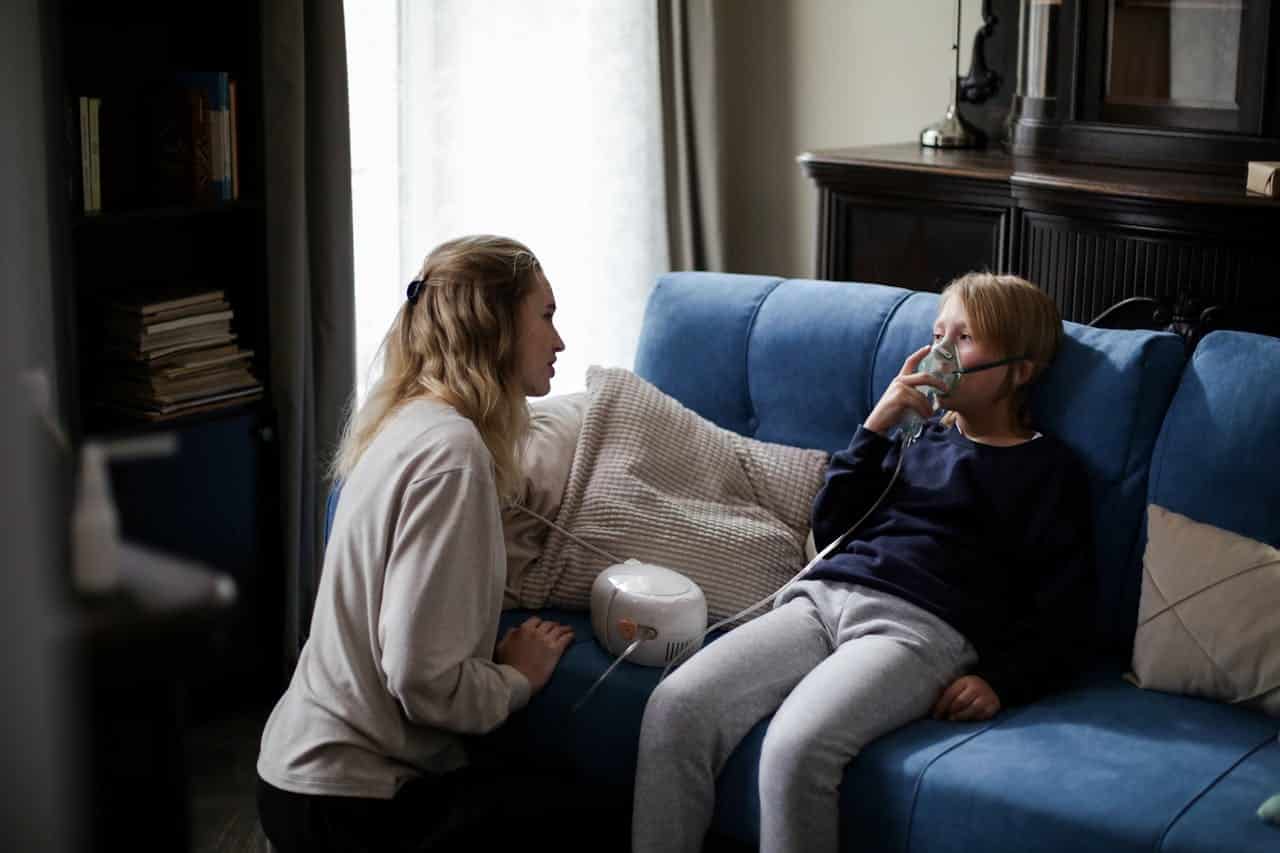Sensory Processing Disorder (SPD) occurs when the brain has difficulty interpreting sensory input from the environment. One way to identify this condition is through an online sensory processing disorder test online, which can help determine if someone is experiencing sensory challenges. This dysfunction can result in sensory overload or an inability to process sensory messages effectively, leading to various difficulties.
Children with sensory processing disorders may have difficulty tolerating certain textures, sounds, or lights. This can cause behavioral issues, such as meltdowns or withdrawal, as they try to cope with sensory overload.
Success Stories
“Move Up ABA has been a lifeline for our family. Before starting therapy, our son struggled with daily routines and communication. Now, he’s more independent and even initiated a conversation with a classmate for the first time! The progress we’ve seen in just six months is truly remarkable.”
- Emily R., Silver Spring, Accountant
“As a single dad, I was overwhelmed trying to manage my child’s behavior. The Move Up ABA team not only provided amazing support for my little girl but also taught me practical strategies to use at home. Their in-home sessions fit perfectly with our busy schedule. I’m so grateful for their patience and expertise.”
- Michael T., Rockville, Middle School Teacher
“We were hesitant about starting ABA therapy, but Move Up ABA’s approach put us at ease from day one. Our twins have made incredible strides in their social skills and self-regulation. The therapists are like extended family now, and we couldn’t be happier with our decision to work with them.”
- Aisha and James L., Simpson, Police Officers
Ready to start your child's journey to success? Schedule a free consultation today! 📞 Call (410) 497-8865.
Causes and Symptoms of Sensory Processing Disorder
Sensory integration dysfunction is often seen in children with Autism Spectrum Disorder (ASD) or Attention Deficit Hyperactivity Disorder (ADHD). These conditions can cause heightened or diminished sensitivity to sensory input, affecting behavior and development.
A child with SPD may demonstrate sensory-seeking behaviors or avoid specific sensory experiences altogether. These sensory processing challenges often contribute to balance, coordination, and focus issues.
Diagnosing Sensory Processing Disorder

To diagnose SPD, healthcare providers use a sensory processing disorder test to assess how well a child interprets sensory input. Occupational therapists play a key role in diagnosing and treating SPD by evaluating the child’s responses.
Interpreting test results helps determine the severity of sensory challenges. Early intervention and a tailored sensory diet can significantly improve the child’s ability to regulate sensory input.
Sensory Diet and Treatment for Sensory Processing Disorder
A sensory diet is a personalized plan that includes activities to help children manage sensory overload. It incorporates sensory input that balances calming and stimulating activities to improve overall sensory integration.
Children with sensory-seeking behaviors often benefit from deep pressure, swinging, or tactile play. An occupational therapist can help create a sensory diet that supports the child’s unique sensory needs and enhances their daily functioning.
Sensory Processing Challenges and Behavioral Issues
Children with sensory processing disorders often display challenging behaviors as they struggle with sensory overload. This can include extreme reactions to lights, sounds, or textures, which may lead to frustration and difficulty in social settings.
Addressing sensory overload through a sensory diet or environmental modifications can reduce these challenging behaviors. Children can learn to manage sensory processing challenges and improve their emotional responses with proper intervention.
Supporting Children with Sensory Processing Disorders
Providing a sensory-friendly environment that caters to their needs is essential to support children with SPD. Strategies include using noise-canceling headphones, providing a quiet space, or incorporating sensory input activities throughout the day.
Working closely with an occupational therapist can help children better interpret sensory messages and develop coping strategies. These interventions can improve the child’s behavior, balance, and overall quality of life.
Sensory Overload and Its Impact
Sensory overload occurs when a child is exposed to too much sensory input, causing them to become overwhelmed. This can lead to emotional outbursts, anxiety, or withdrawal as the child struggles to process the overwhelming stimuli.
Managing sensory overload involves reducing or controlling sensory input in the environment. Strategies such as dimming lights, reducing noise, or providing breaks can help children with SPD navigate overwhelming situations more effectively.
Sensory Seeking and Sensory Avoidance
Sensory-seeking behaviors are common in children with sensory processing disorder. These children may actively seek out specific sensory inputs, like spinning, jumping, or making loud noises, to regulate their sensory system.
Conversely, sensory avoidance involves a child refusing to engage with specific stimuli due to heightened sensitivity. Both behaviors can be addressed with appropriate sensory input and a well-designed sensory diet.
Sensory Processing and Autism Spectrum Disorder

Children with Autism Spectrum Disorder (ASD) often face sensory processing difficulties, such as sensory seeking or overload, which can affect communication, behavior, and social interaction.
A tailored sensory diet, including calming or stimulating activities, helps children with ASD manage their sensory needs. Occupational therapy plays a key role in supporting healthy adaptation to sensory experiences.
The Role of the Occupational Therapist
Occupational therapists specialize in helping children with sensory processing disorders by developing personalized sensory integration plans. These professionals evaluate a child’s responses to sensory input and recommend strategies to improve their ability to process and respond to sensory messages.
An occupational therapist may suggest specific exercises and activities that help children regulate their sensory system. This might include activities for balance, coordination, and fine motor skills that support overall development and behavior.
Sensory Processing Disorder and Poor Balance
Poor balance often results from sensory integration dysfunction, affecting how the body perceives and responds to sensory input. Children with SPD may struggle with coordination, balance, and spatial awareness due to difficulties processing proprioceptive and vestibular input.
Occupational therapists address poor balance by incorporating activities like balance exercises, jumping, and yoga-like movements into a child’s sensory diet. This helps them improve body awareness and better integrate sensory information related to movement and position.
Creating a Sensory-Friendly Environment
Creating a sensory-friendly environment at home or school helps children with sensory processing disorders by reducing overwhelming stimuli and providing spaces for retreat when needed.
Strategies like dimming lights, reducing noise, and offering tactile toys or weighted blankets help children feel safe and supported, allowing them to engage with the world at their own pace.
Long-Term Management of Sensory Processing Disorder
Managing sensory processing disorder effectively requires ongoing support and adaptations as the child grows. Sensory processing challenges can change over time, and adjustments to the sensory diet may be necessary to continue addressing the child’s needs.
With proper intervention from occupational therapists, children can develop strategies to manage sensory overload and sensory seeking behaviors. Long-term support helps children with SPD lead successful, fulfilling lives while navigating their sensory world.
The Importance of Early Intervention

Early intervention is critical for children with sensory processing disorder, as it helps them develop strategies to manage sensory overload and sensory seeking behaviors. Addressing sensory processing challenges early can prevent difficulties in school, social interactions, and daily activities.
Working with an occupational therapist during early childhood allows for personalized strategies and a sensory diet that aligns with the child’s needs. Early support can significantly improve a child’s ability to process sensory input, leading to better emotional regulation and overall functioning.
Understanding Sensory Processing Disorders in School
Children with sensory processing disorders often face challenges in school environments due to sensory overload or difficulty processing sensory input. The classroom, with its sensory stimuli like bright lights, loud noises, and varied textures, can be overwhelming for children with SPD.
Accommodations such as quiet spaces, noise-canceling headphones, or sensory breaks during the school day can help children with SPD manage their sensory challenges. Collaborating with teachers and occupational therapists ensures that sensory needs are met, allowing children to succeed academically and socially.
Sensory Processing and Attention Deficit Hyperactivity Disorder (ADHD)
Sensory processing difficulties are common in children with Attention Deficit Hyperactivity Disorder (ADHD), as they may struggle to filter and prioritize sensory input. This can result in sensory overload or difficulty focusing on tasks, both of which affect behavior and performance.
For children with ADHD, a tailored sensory diet can help regulate sensory input, improve focus, and reduce disruptive behaviors. Occupational therapy can support children with ADHD by helping them interpret sensory messages and develop strategies for managing sensory overload.
Sensory Integration and Its Role in Development
Sensory integration is essential for a child’s development, as it allows them to process and respond to sensory input in a way that supports learning and growth. Children with sensory processing disorders may struggle with sensory integration, affecting their ability to engage with their environment and perform everyday tasks.
Occupational therapy focuses on improving sensory integration by offering activities that challenge the child’s sensory system in a controlled and supportive manner. These interventions can help children better interpret sensory messages, leading to improved behavior, coordination, and social interactions.
The Link Between Sensory Processing Disorder and Autism Spectrum Disorder
Sensory processing disorders are often linked to Autism Spectrum Disorder (ASD), with many children with ASD experiencing heightened sensitivity or under-responsiveness to sensory input. These sensory difficulties can manifest as sensory seeking behaviors, difficulty with social cues, or sensory overload in busy environments.
Children with ASD may benefit from a sensory diet that includes calming activities or sensory stimulation, depending on their specific needs. Occupational therapists play a key role in helping children with ASD manage their sensory experiences, improving their ability to engage with the world and interact with others.
Sensory Messages and Child Behavior

Interpreting sensory messages correctly is crucial for children with sensory processing disorders. When children struggle to process sensory input, it can lead to challenging behaviors such as tantrums, aggression, or withdrawal as they attempt to cope with overwhelming stimuli.
Providing sensory input in a structured and supportive way helps children better interpret these messages. By incorporating a sensory diet, children can better regulate their sensory experiences and respond to their environment in a more controlled and positive manner.
Sensory Diets for Children with SPD
A sensory diet is a carefully designed plan that incorporates specific activities aimed at helping children with sensory processing disorder manage their sensory needs. These activities are tailored to the child’s individual preferences and sensitivities, ensuring they receive the right type and amount of sensory input.
The goal of a sensory diet is to maintain a balance between sensory seeking and sensory overload. By incorporating calming activities or sensory stimulation throughout the day, children can improve their ability to regulate their sensory responses and cope with various environmental stimuli.
Strategies to Reduce Sensory Overload in Children
Reducing sensory overload is essential for children with sensory processing disorder to prevent anxiety and meltdowns. One effective strategy is to create a quiet, controlled space where the child can retreat when overwhelmed by external stimuli.
In addition to creating a sensory-friendly space, other interventions can help, such as offering breaks during tasks, using weighted blankets, or providing calming sensory input like deep pressure or soothing sounds. These techniques can reduce sensory overload and help children manage their sensory challenges throughout the day.
Conclusion
Sensory processing disorder (SPD) can affect a child’s ability to engage with the world, causing challenges in sensory overload, behavior, and daily tasks. Early identification, through SPD tests and working with occupational therapists, is key to creating effective management strategies. A tailored sensory diet helps regulate sensory input and supports emotional and behavioral control.
Children with SPD, including those with Autism Spectrum Disorder (ASD) or Attention Deficit Hyperactivity Disorder (ADHD), can thrive with appropriate interventions. By addressing sensory overload and promoting sensory integration, children can improve their ability to process information and interact with their environment, leading to a more fulfilling and successful life.






